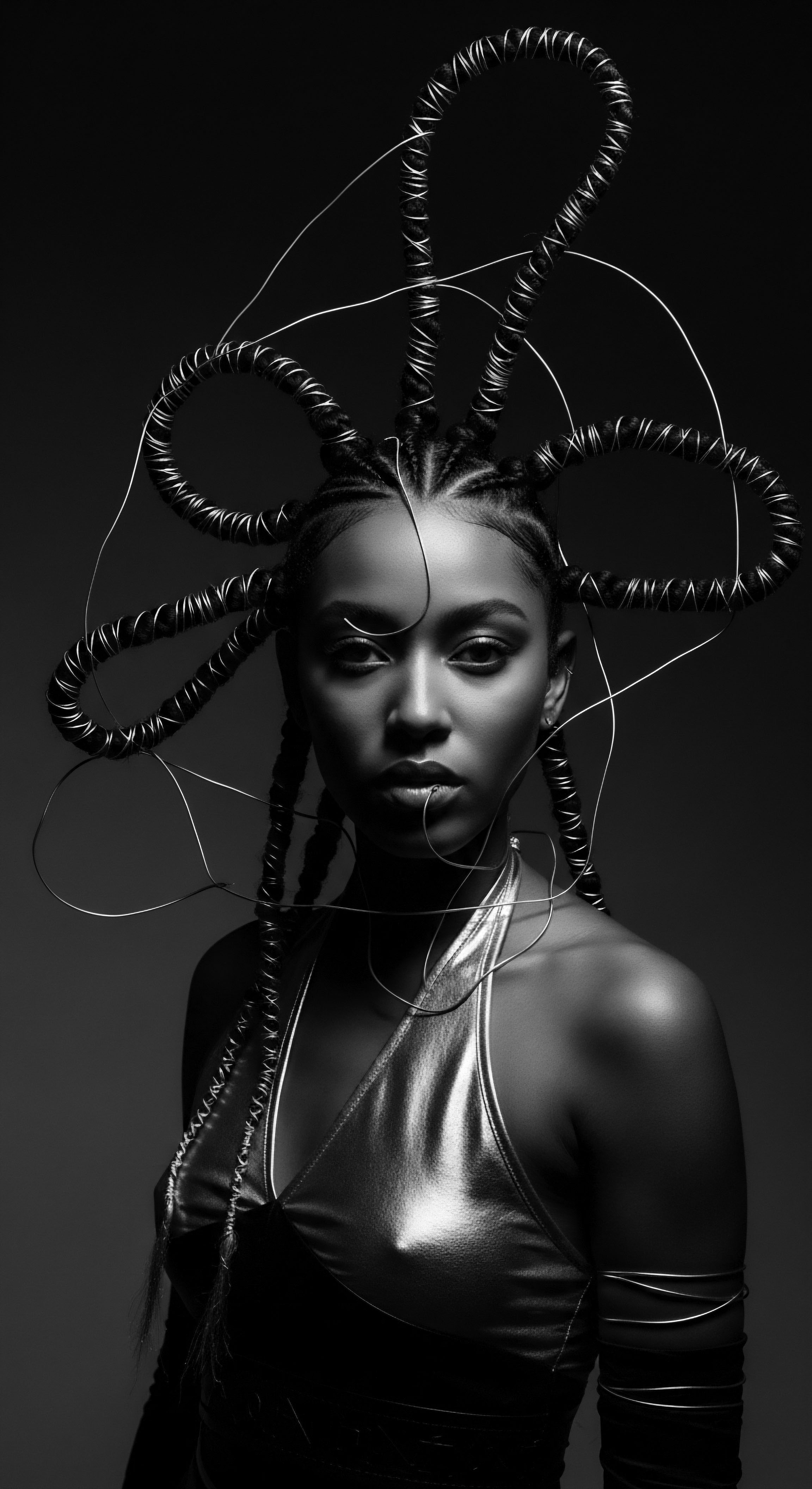
Roots
To touch one’s textured hair, to work a warming oil through its spirals and coils, is to engage with more than a simple act of care. It is a whisper carried on the wind, a memory stirring from ancestral shores, a living connection to a heritage deeply intertwined with the very fibers of our being. This intentional practice, so common in modern textured hair regimens, reaches back through time, echoing traditions held sacred across diasporic communities for millennia. It is a quiet conversation between past and present, where the wisdom of ancient rituals meets the understanding of contemporary science.
Modern textured hair routines, especially oiling, serve as direct, living bridges to ancient diasporic traditions, reaffirming a continuous heritage of self-care and identity.

The Genesis of Care
Our textured hair, with its unique architecture, naturally seeks moisture and protection. This inherent need was recognized by those who walked before us. In pre-colonial Africa, hair care was a communal, deeply significant activity, far beyond mere aesthetics. It communicated identity, status, age, and even spiritual connection .
The intricate styling processes, which often required hours or even days, included crucial steps of washing, combing, and oiling . These oils, derived from local botanicals, were not simply conditioners; they were elixirs, vital for maintaining healthy hair in diverse climates and for preparing hair for elaborate, protective styles. For instance, the Yoruba people of Nigeria viewed hair as the most elevated part of the body, using braided and oiled hair to send messages to the gods .

Oiling as a Fundamental Practice Across Ancient Civilizations
The use of oils for hair care extends across various ancient civilizations with rich traditions. While our focus remains on the diasporic journey of textured hair, understanding the broader historical context of oiling reveals a universal recognition of its value. Ancient Egyptians, for example, relied on oils like castor oil , moringa oil , and coconut oil to nourish and style their hair, often mixing them with honey and herbs to create masks for growth and shine . These practices highlight a long-standing human understanding of the protective and beautifying properties of natural oils.
In West African traditions, oils and butters were consistently used to keep hair moisturized in hot, dry climates. These were often paired with protective styles to maintain length and health . This deep practice was not lost with the transatlantic forced migration.
Despite the brutal dehumanization of having their heads shaved upon arrival in the Americas, and the loss of traditional tools and ingredients, enslaved Africans remarkably adapted, using whatever was available—even bacon grease or butter—to care for their hair and maintain a semblance of their ancestral practices . This resilience speaks volumes to the inherent value placed on hair care within these communities, a practice deeply rooted in survival and the quiet preservation of self.

Hair Anatomy and the Echo of Ancestral Need
Textured hair strands possess a distinctive elliptical cross-section, and their numerous bends and twists create natural points of fragility. This structural characteristic makes it more prone to dryness because natural sebum from the scalp struggles to travel down the coiled shaft . This scientific understanding validates the ancient drive for supplemental moisture, precisely what ancestral oiling traditions provided. The oils acted as a sealing agent , minimizing moisture loss and adding a protective layer against environmental stressors like sun and dust .
Consider the science behind why oils work so well with textured hair. Certain oils, like Coconut Oil, possess a molecular structure that allows them to penetrate the hair shaft, reducing protein loss and providing deep conditioning from within . Others, such as Castor Oil, are known for their thickness and ability to lock in moisture, promoting softer, smoother hair, and even stimulating scalp circulation . These are not new discoveries; they are scientific validations of generations of lived experience and observation.

Ancestral Lexicon and the Language of Hair
The language surrounding textured hair care today, though often modernized, retains echoes of traditional approaches. Terms like “sealing” and “lubricating” were perhaps not articulated with scientific precision in ancient times, but the actions themselves were certainly understood and applied. The very act of applying oil was intertwined with a sense of connection—a language of touch and care passed from elder to youth.
This generational transfer of knowledge, even without a formal lexicon, formed the bedrock of hair care heritage. The emphasis on healthy, clean, and neat hair in pre-colonial Africa, achieved through extensive care routines involving oiling, signifies a deep-seated appreciation for hair as a marker of well-being and social standing .
- Shea Butter ❉ A staple in West African traditions, used for centuries to moisturize and protect hair from harsh climates . Its use persists globally due to its profound conditioning capabilities.
- Coconut Oil ❉ Revered across various cultures, including parts of Africa and the Caribbean, for its deep penetrating and moisturizing properties .
- Castor Oil ❉ Ancient Egyptians and communities throughout the diaspora utilized this thick oil for conditioning, strengthening, and promoting the appearance of thicker hair .
| Aspect Primary Purpose |
| Ancient Diasporic Oiling Traditions Protection from environmental elements, ritualistic cleansing, social bonding, spiritual connection, pre-styling preparation for elaborate styles . |
| Modern Textured Hair Routines Moisture retention, frizz reduction, shine enhancement, scalp health, detangling aid, heat protection . |
| Aspect Key Ingredients |
| Ancient Diasporic Oiling Traditions Locally sourced plant oils (e.g. shea butter, palm oil, coconut oil, marula oil), animal fats, often infused with herbs . |
| Modern Textured Hair Routines Wide array of natural oils (e.g. jojoba, argan, olive, avocado, specialized blends), often combined with scientific compounds . |
| Aspect Application Method |
| Ancient Diasporic Oiling Traditions Hands-on scalp and strand massage, communal rituals, often left in for extended periods, sometimes heated . |
| Modern Textured Hair Routines Massage into scalp, sealing oil for LOC/LCO method, pre-poo treatments, leave-in applications; variable duration . |
| Aspect The enduring thread of oil application highlights its timeless necessity for textured hair, adapted but never abandoned across generations. |

Ritual
The deliberate application of oils to textured hair transcends mere functional benefit; it transforms into a ritual, a mindful engagement with self and heritage. This understanding, once an unspoken knowing, is now consciously rediscovered in modern routines. The echo of ancient diasporic oiling traditions in today’s practices can be felt in the tender touch, the patient working of product, and the deep satisfaction that follows. These routines, though perhaps privatized now in ways communal life once supported, retain the essence of purpose and connection.
Contemporary hair oiling rituals carry the quiet power of ancestral traditions, shaping identity and well-being through intentional self-care.

The Artistry of Ancient Styling and Oil’s Role
Ancestral styling was an art form, each braid and twist telling a story. Oil was an indispensable medium in this artistry. Before the precise parting for cornrows or the intricate shaping of Bantu knots, hair was often oiled to improve its pliability, reduce friction, and keep it soft during the lengthy styling process. This preparation was not simply about preventing breakage; it was about honoring the hair, making it receptive to the hands that sculpted it into culturally significant expressions .
The Himba women of Namibia, for example, have for centuries crafted their distinctive dreadlocks with a mixture of ground ochre, goat hair, and butter, creating styles that denote age, marital status, and life stage . This fusion of natural elements with hair, supported by oiling, is a powerful historical example.

Protective Styling and Ancestral Roots
Protective styles, a cornerstone of modern textured hair care, have deep ancestral roots. Braids, twists, and locs were not only forms of adornment but also served practical purposes ❉ protecting the hair from environmental harshness, retaining moisture, and preserving length. Oils were vital in creating these styles. They provided slip for detangling, minimized tension during braiding, and sealed the cuticle to lock in hydration, extending the life of the style .
- Cornrows ❉ Historically used as a means of communication and a way to store seeds for survival during the transatlantic slave trade, their creation involved oiling for manageability and preservation .
- African Hair Threading ❉ Known as “Irun Kiko” among the Yoruba people of Nigeria since the 15th century, this protective style uses threads to wrap hair sections. Oiling the hair beforehand was customary to prevent damage during manipulation and to help with length retention .
- Locs (Dreadlocks) ❉ While their origins are diverse, locs were styled in many ancient African communities. Maintaining them often involved the use of butters and oils to keep the hair moisturized and healthy, as seen with the Himba tribe .
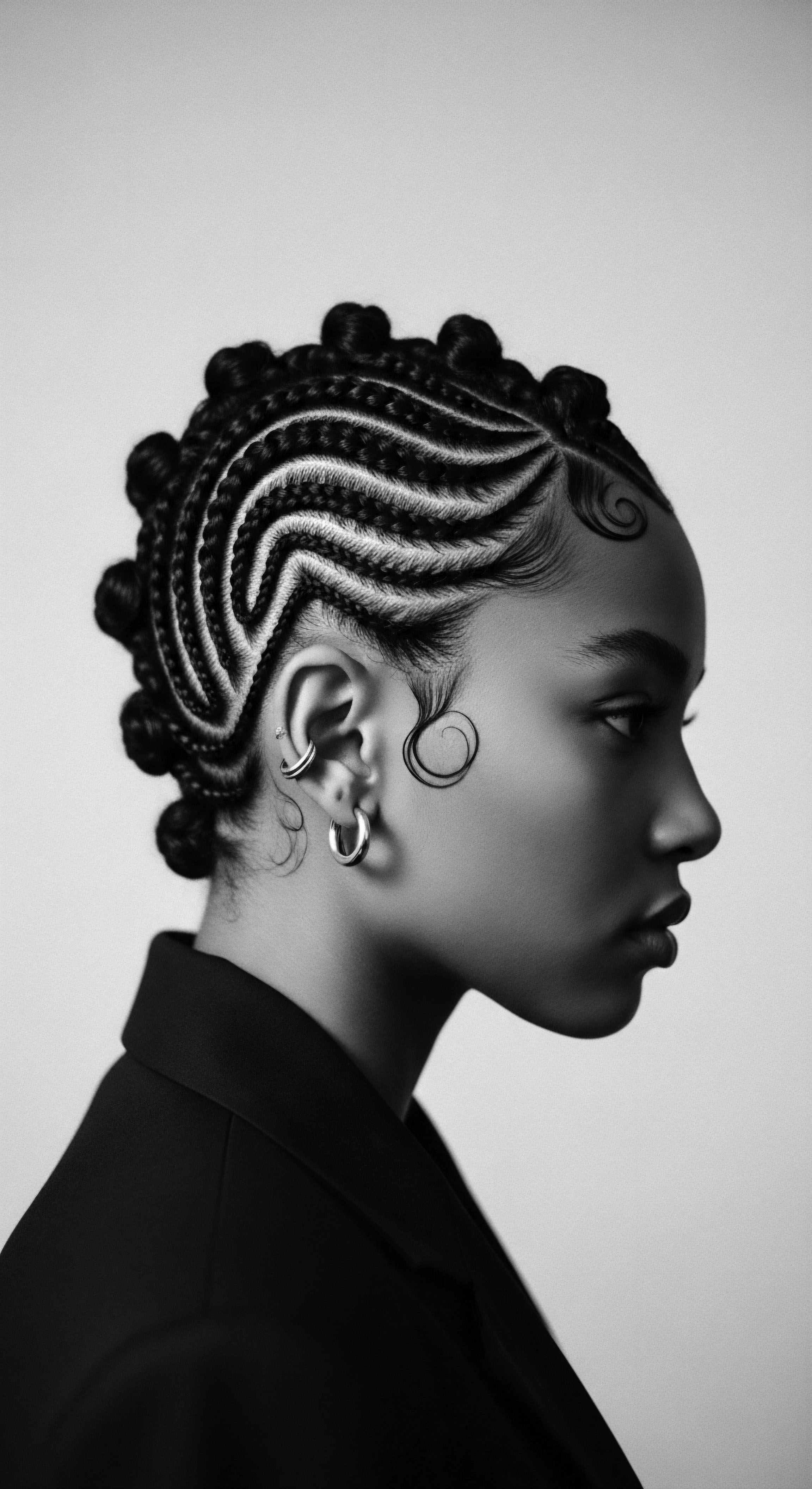
Modern Echoes of Traditional Oil Application
The “Liquid Oil Cream” (LOC) method, popular in today’s natural hair community, directly mirrors the layered hydration strategies employed by ancestors. The principle is simple ❉ hydrate with water or a water-based product, seal with oil, and then apply a cream to close the hair cuticle and prevent moisture loss . This sequence, whether consciously articulated or simply practiced through generations, optimizes moisture retention for textured hair, which struggles with natural sebum distribution .
The modern emphasis on pre-poo treatments—applying oil before shampooing—also aligns with the ancient understanding of oil as a protective barrier, preventing the stripping effect of harsh cleansers . This suggests a continuous line of inquiry into how to best maintain hair health, a conversation across time.
The conscious choice of certain oils in modern regimens also speaks to an unbroken chain of knowledge. While the availability of oils has expanded globally, ingredients like shea butter , coconut oil , and castor oil remain prominent for textured hair. This preference is not accidental; it is informed by centuries of observed efficacy, now often validated by contemporary dermatological research . The consistency of these favored oils represents a living testament to ancestral wisdom.
For example, Jamaican black castor oil , a widely used product today, is a direct descendent of ancestral methods of processing castor beans, a tradition carried through the diaspora . Its continued popularity for scalp massages and promoting the appearance of stronger hair speaks to a collective memory of its benefits .

Relay
The journey of textured hair care, especially its deep connection to oiling traditions, is a continuous relay, a passing of the torch from one generation to the next, adapting and refining but never severing the ancestral link. This relay is not merely about physical practices; it carries profound cultural memory, resilience, and a quiet statement of identity. Modern scientific inquiry now lends its voice to affirm the efficacy of these time-honored practices, strengthening the bridge between ancient wisdom and present-day understanding.
The enduring legacy of diasporic oiling traditions is not merely a historical footnote, but a vital, evolving practice continually affirmed by modern scientific understanding and cultural reclamation.

Validating Ancestral Wisdom Through Science
For too long, ancestral hair care practices were dismissed as anecdotal or unsophisticated, particularly within systems that sought to devalue Black and mixed-race expressions of beauty . Yet, modern scientific research increasingly validates the very principles that underpinned ancient oiling traditions. For instance, the understanding that certain oils can indeed penetrate the hair shaft, reducing protein loss and providing deep moisture, confirms centuries of observation . The antimicrobial and anti-inflammatory properties of many traditional oils, like coconut and neem (used in Ayurvedic traditions that influenced diasporic practices), are now documented, explaining their efficacy in maintaining scalp health .
Consider the role of scalp massage, a universal element in traditional oiling rituals . Scientific inquiry has shown that scalp massage can improve blood circulation to hair follicles, supplying them with essential nutrients and oxygen crucial for hair vitality . This is not a new discovery, but rather a scientific articulation of what was intuitively known and practiced for generations. The wisdom of incorporating these elements into a holistic care routine for textured hair is now supported by both lived experience and clinical observation.
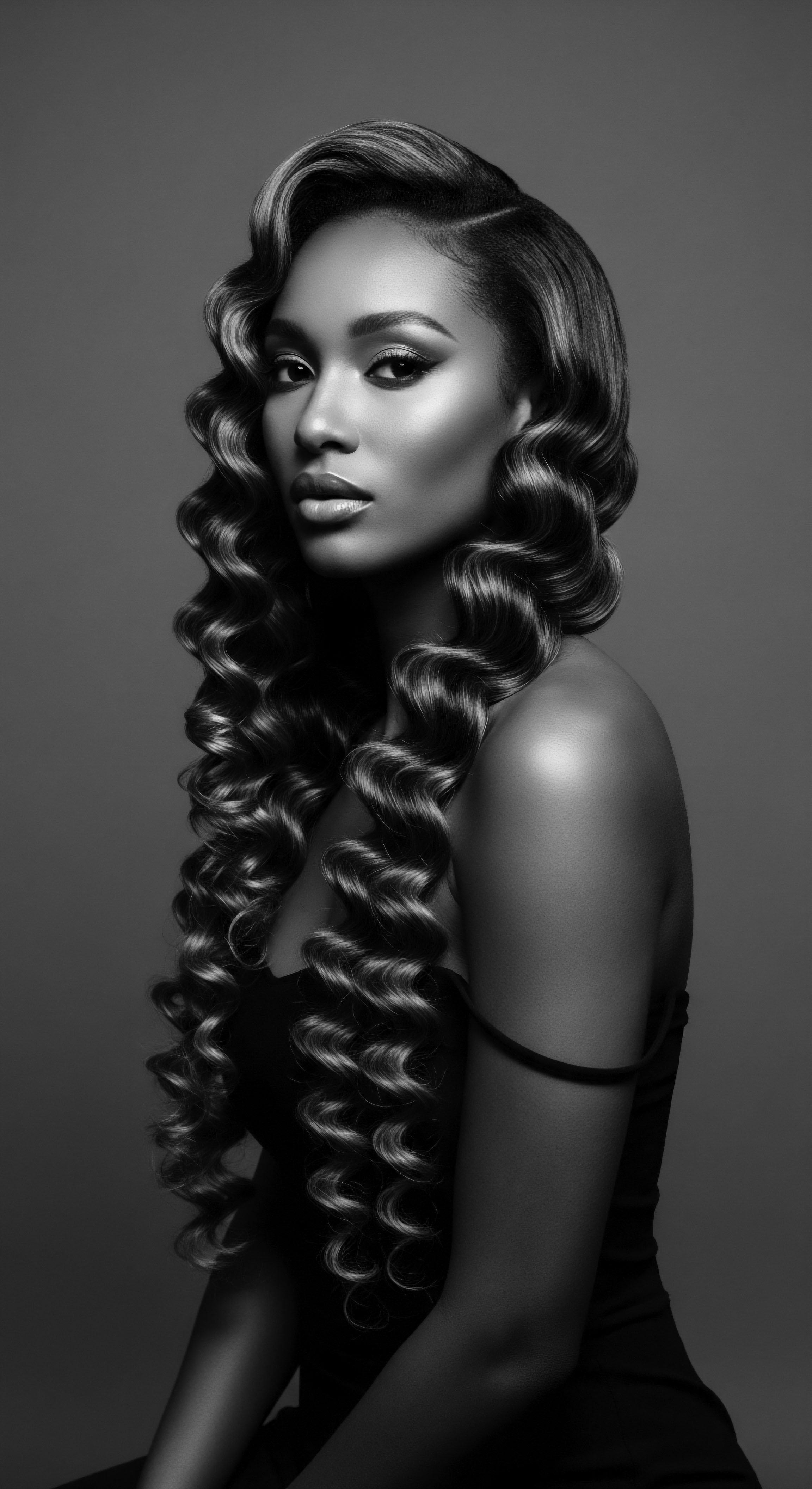
The Evolution of Hair Oiling ❉ From Communal to Personal Rituals?
Ancient oiling traditions were often communal, fostering bonding and knowledge transfer within families and communities . These sessions were more than hair care; they were social occasions, moments of shared heritage and intimacy. While modern life often dictates more individualized routines, the spirit of this communal care persists. The rise of online natural hair communities and shared beauty spaces provides a contemporary echo of this collective support, where individuals exchange knowledge and celebrate their hair journeys, much like their ancestors might have done around a family hearth .
The products themselves have also evolved. Ancient concoctions relied strictly on what was locally available, often infused with herbs through simple processes . Today, formulations are more sophisticated, combining traditional oils with other botanicals, extracts, and sometimes patent-pending ingredients that amplify benefits .
Yet, the core purpose remains ❉ to nourish, protect, and beautify textured hair. The persistent popularity of oils like Jojoba Oil, which mimics the scalp’s natural sebum, or Argan Oil, known for its smoothing qualities, reflects a continuous search for effective, natural solutions, albeit with a globalized reach .

Ancestral Ingredients in Modern Formulations?
Many contemporary hair care lines explicitly draw upon ancestral ingredients, celebrating their efficacy and cultural resonance. Brands often highlight shea butter, coconut oil, and various botanical infusions precisely because of their proven heritage and benefits. This trend points to a conscious effort to reclaim and honor traditional knowledge, moving away from past eras where Eurocentric beauty standards often dismissed the value of textured hair and its indigenous care practices .
The very act of choosing these products becomes a form of cultural affirmation, a quiet rebellion against historical erasure. It reflects a growing collective desire to connect with one’s roots, to understand the deeper story of hair beyond the surface. This continuous search for authenticity in ingredients and practices is a powerful testament to the enduring influence of diasporic oiling traditions.
A 2017 study, “The ‘Good Hair’ Study,” revealed persistent biases, finding that Afro hairstyles were often viewed as less attractive or professional compared to straight hair in the U.S. context . This disturbing data underscores the ongoing struggle against colonial beauty standards, making the reclamation of ancestral practices, including oiling, a profound act of resistance and self-definition. Embracing traditional oiling is not just about hair health; it is a profound political statement, a declaration of worth and heritage .
| Traditional Oil Shea Butter |
| Ancestral Use (Historical Context) Primarily West African; used to moisturize, protect from dry climates, and aid in styling . |
| Modern Scientific Understanding/Benefit Rich in fatty acids (oleic, stearic) and vitamins A & E; acts as an excellent emollient and anti-inflammatory, sealing moisture into the hair shaft . |
| Traditional Oil Coconut Oil |
| Ancestral Use (Historical Context) Ubiquitous across various regions including parts of Africa, Caribbean, and South Asia; cherished for deep conditioning . |
| Modern Scientific Understanding/Benefit Unique molecular structure (lauric acid) allows deep penetration into the hair cortex, reducing protein loss and providing internal hydration . |
| Traditional Oil Castor Oil |
| Ancestral Use (Historical Context) Ancient Egypt and Caribbean regions; used for strengthening, promoting hair appearance, and conditioning . |
| Modern Scientific Understanding/Benefit High in ricinoleic acid, a fatty acid with moisturizing, anti-inflammatory, and antimicrobial properties; helps seal moisture and stimulate scalp . |
| Traditional Oil The scientific community increasingly validates the efficacy of oils long revered in diasporic hair care, bridging ancestral practice with contemporary knowledge. |
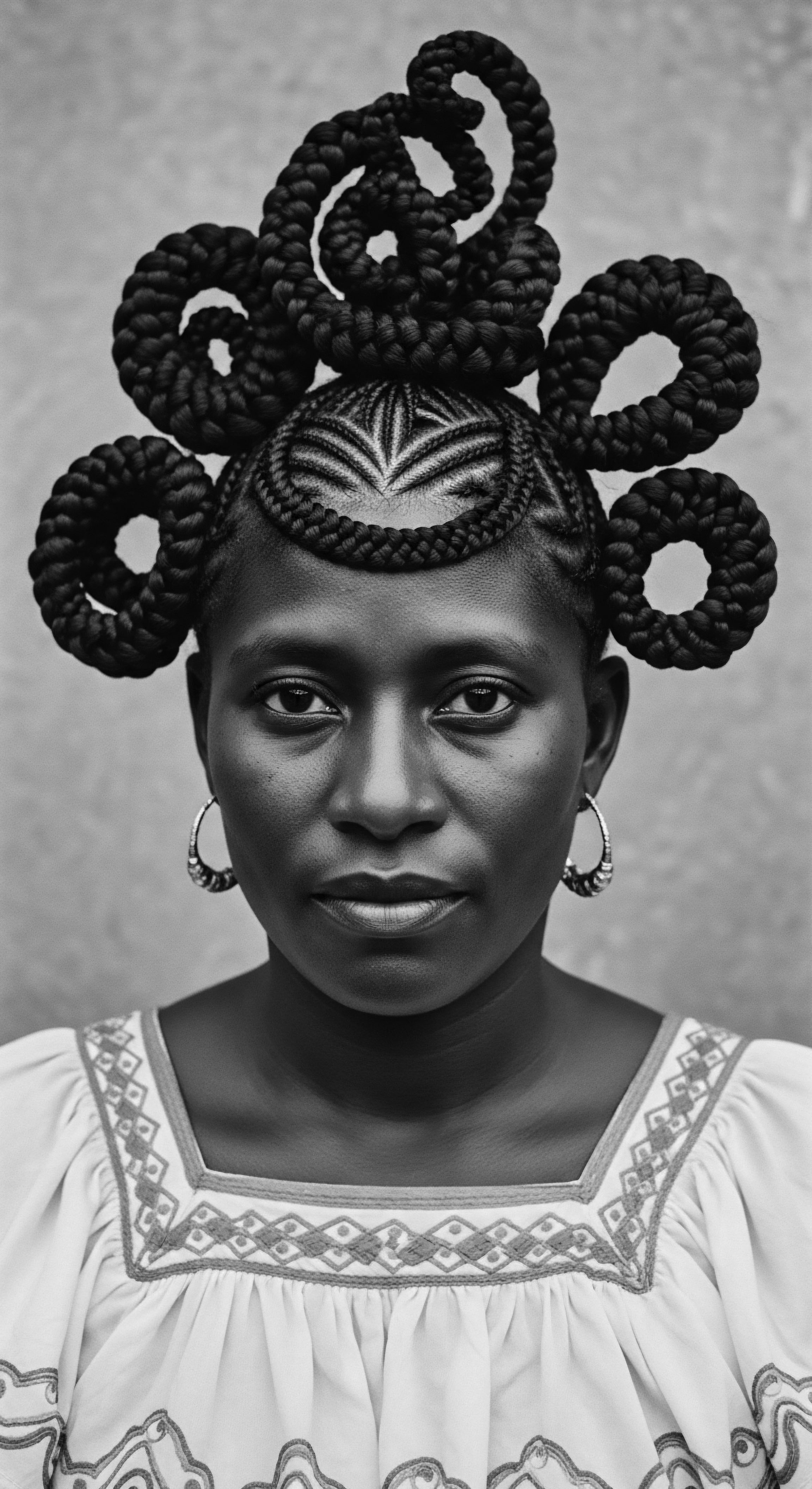
Reflection
The gentle rhythm of oiling textured hair, whether it be a quick application before braiding or a leisurely scalp massage on a quiet evening, carries within it the deep currents of history. It is a continuous narrative of care, survival, and celebration, handed down through generations of Black and mixed-race people. From the communal bonding rituals in ancient African villages to the solitary moments of self-care in a modern home, the act of applying oil remains a powerful connection to a collective heritage.
The “Soul of a Strand” ethos speaks to this very truth ❉ that each coil, each curl, each strand holds not only its elemental biology but also the whispers of ancestors, the resilience of a people, and the beauty of enduring traditions. Modern routines, far from being entirely new inventions, are often sophisticated adaptations of what has always worked, what has always nourished, what has always affirmed. They are a living archive, a breathing testament to the profound relationship between textured hair and its ancient diasporic oiling traditions. In these seemingly simple acts, we find not just echoes, but the very pulse of heritage, guiding us towards a future where care is always rooted in knowing, and beauty is always a reflection of our deep and beautiful past.
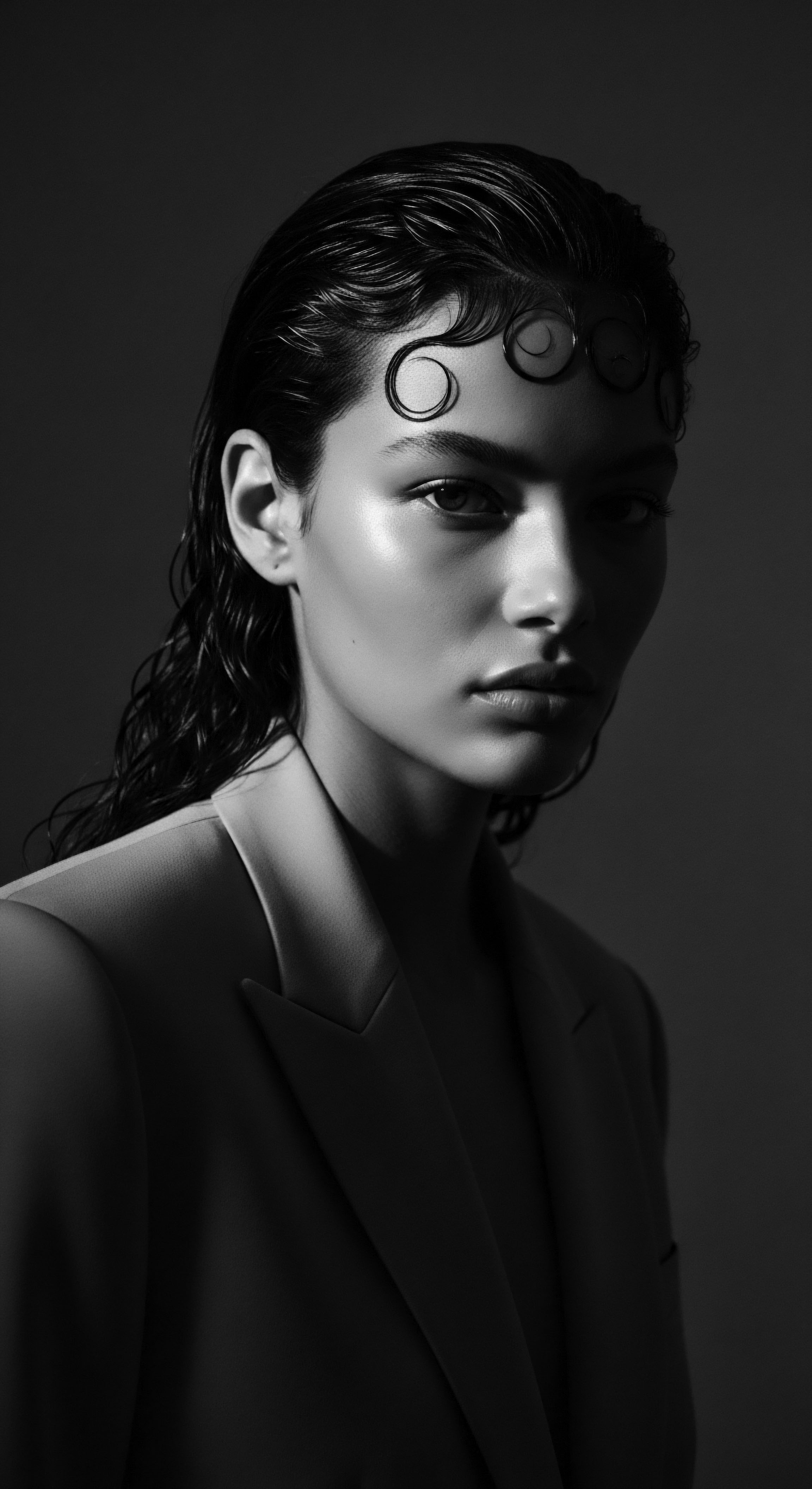
References
- Byrd, A. and Tharps, L. (2014). Hair Story ❉ Untangling the Roots of Black Hair in America. St. Martin’s Press.
- Cook, M. and Johnson, M. (2017). Black Women’s Natural Hair Care Communities ❉ Social, Political, and Cultural Implications. Smith Scholarworks.
- De Beauvoir, S. (2020). Examining the History and Value of African Hair. NativeMag.
- Gordon, J.L. (2023). What Every Dermatologist Must Know About the History of Black Hair. Cutis.
- Mohandas, J. (2023). Utilization of Herbs in Herbal Hair Oils ❉ A Comprehensive Review. International Journal of Pharmaceutical Sciences Review and Research.
- Nnachetam, O. (2022). The History of Black Hair. BLAM UK CIC.
- O’Hear, S. and Akintoye, K. (2012). The History of African and African American Hair ❉ Cultural Identity and Self-Esteem. Journal of Black Studies.
- Powell, R. (2024). Historical Perspectives on Hair Care and Common Styling Practices in Black Women. Dermatology Online Journal.
- Thompson, S.A. (2020). Black Women’s Hair, Culture, and Identity. Palgrave Macmillan.
